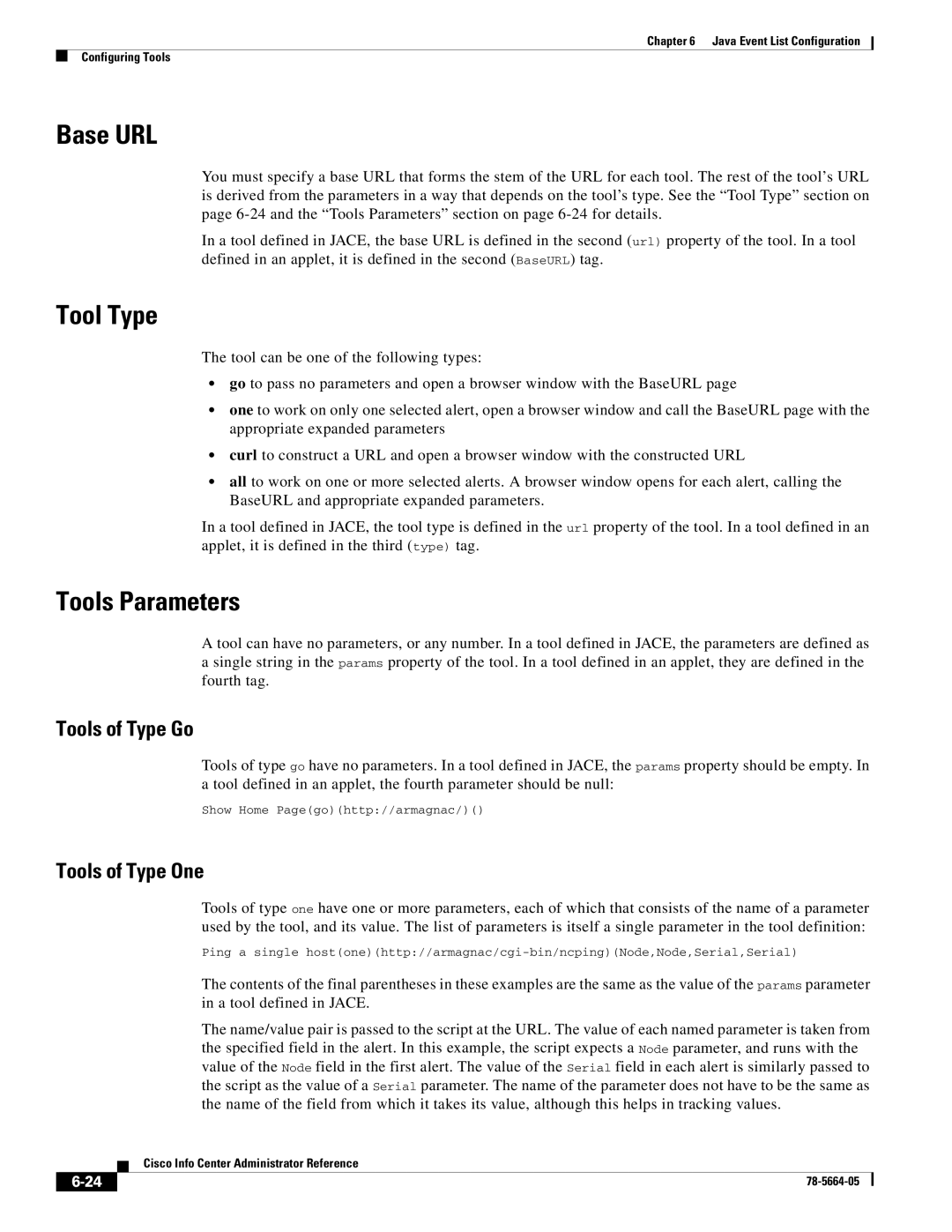
Chapter 6 Java Event List Configuration
Configuring Tools
Base URL
You must specify a base URL that forms the stem of the URL for each tool. The rest of the tool’s URL is derived from the parameters in a way that depends on the tool’s type. See the “Tool Type” section on page
In a tool defined in JACE, the base URL is defined in the second (url) property of the tool. In a tool defined in an applet, it is defined in the second (BaseURL) tag.
Tool Type
The tool can be one of the following types:
•go to pass no parameters and open a browser window with the BaseURL page
•one to work on only one selected alert, open a browser window and call the BaseURL page with the appropriate expanded parameters
•curl to construct a URL and open a browser window with the constructed URL
•all to work on one or more selected alerts. A browser window opens for each alert, calling the BaseURL and appropriate expanded parameters.
In a tool defined in JACE, the tool type is defined in the url property of the tool. In a tool defined in an applet, it is defined in the third (type) tag.
Tools Parameters
A tool can have no parameters, or any number. In a tool defined in JACE, the parameters are defined as a single string in the params property of the tool. In a tool defined in an applet, they are defined in the fourth tag.
Tools of Type Go
Tools of type go have no parameters. In a tool defined in JACE, the params property should be empty. In a tool defined in an applet, the fourth parameter should be null:
Show Home Page(go)(http://armagnac/)()
Tools of Type One
Tools of type one have one or more parameters, each of which that consists of the name of a parameter used by the tool, and its value. The list of parameters is itself a single parameter in the tool definition:
Ping a single
The contents of the final parentheses in these examples are the same as the value of the params parameter in a tool defined in JACE.
The name/value pair is passed to the script at the URL. The value of each named parameter is taken from the specified field in the alert. In this example, the script expects a Node parameter, and runs with the value of the Node field in the first alert. The value of the Serial field in each alert is similarly passed to the script as the value of a Serial parameter. The name of the parameter does not have to be the same as the name of the field from which it takes its value, although this helps in tracking values.
Cisco Info Center Administrator Reference
| ||
|
